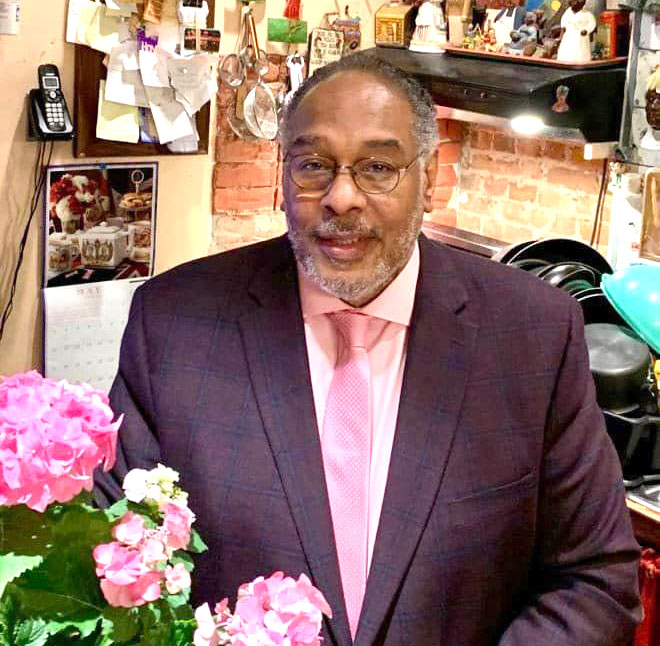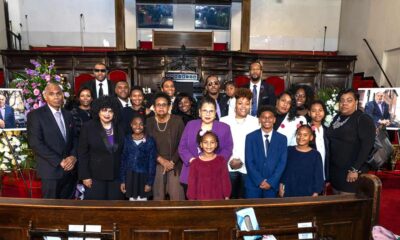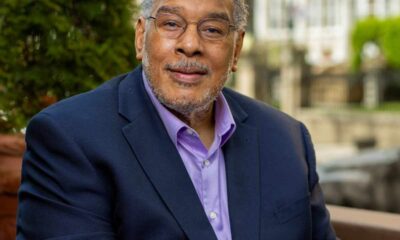Obituary
REFLECTIONS on Dr. Flateau…

Hon. Annette M. Robinson on “A Legacy of Purpose”
I started out with Dr. John Louis Flateau back in 1973. I speak from the perspective of being supported and encouraged by him. I will never forget that relationship.
John was a brilliant servant-leader. He talked about representation on the community school board, and we had the whole school board movement back in the 1970s. I was elected to Community School Board District 16 in 1977.
He recruited me while I was attending Our Lady of Charity Church in Bedford-Stuyvesant. He said, ‘You need to come and volunteer, and you also need to run for county committee.’ Little did I know what that meant at the time, that I would become a local elected official of the 56th Assembly District.
Dr. Flateau leaves a legacy of purpose. He understood what the mission was and executed it. I would call Dr. John Flateau an architect of redistricting, voting rights, and the movement itself (in reference to the Coalition for Community Empowerment).
John was there, drawing lines and counting people when we didn’t know there were lines to be drawn and people to be counted. He looked to see where we could find additional districts so that we could have more empowerment for our communities.
Any time that I needed to consult on the lines for my district when redistricting came, and I was in the Assembly, I consulted with Dr. Flateau. He said, ‘This is what you need to do to make sure that most of our people were in districts that had majority representation.
John represented the Talented Tenth in our community and across this country. He was one of the most brilliant people in the city, state and this nation, I dare to say. I can’t express enough how much he impacted Central Brooklyn and the movement for empowerment.
John created charts so that we could write the numbers as they came in and know who won in certain districts. We calculated the numbers manually. Inspectors of elections would have sheets at the end of the night, and they brought them in so that we knew what the numbers were. We calculated the numbers in the Assembly Districts when they came in. We could compare our numbers to the Board of Elections. Sometimes, they might be off because people might not have transferred the numbers over correctly.
(Because of John Flateau), we had a process in place to be able to have the numbers so that we would know exactly what went right at that polling site. We did this until it started coming out on television. John had put a procedure in place so that we could check our numbers against the other numbers. People have taken his design and replicated it.
The 36th Council district was created by John, Esmeralda (Simmons), and others who were part of that (early) movement for community empowerment.
They created those seats not only in Brooklyn but throughout the State of New York. They drew those lines to make sure that we had more representation. John was sitting at the table drawing lines to ensure that we had representation.
Hon. Robinson’s statements are excerpted from a recorded interview conducted Tuesday by reporter Mary Alice Miller for Our Time Press
(Distinguished Brooklyn leader Annette Robinson, who currently enjoys national recognition, was elected to the New York City Council in 1991 to represent Bedford Stuyvesant. Term-limited from her City Council position in 2000, she was chosen in a special election held two years later. She captured more than 90% of the vote and served as the District Leader/State Committeewoman for the 56th Assembly District. After her retirement in 2016, she continued to serve as the female Democratic District leader in her district and the Vice Chair of the Kings County Democratic Party, making her second in command. Hon. Robinson is the Vice Chair of the New York State Council of Black Elected Democrats. Her ongoing, impactful work is a testament to the enduring legacy of Dr. John L. Flateau.)
Dr. Brenda M. Green on “A Brilliant Servant/Leader”
Dr. John Louis Flateau, writer, activist, scholar, and professor, was a friend, colleague, and deeply committed public servant. I first met Dr. Flateau (John) when I attended NYU in 1968 as a Martin Luther King (MLK Scholar). He was a key member of the Black Allied Student Association (BASA) that organized to bring 500 Black students to New York University on scholarships and created the Institute for African American Affairs, the African American Student Center, the student newspaper, The Faith which was later renamed Imani, and the literary magazine, Black Creation.
The students who organized to bring in Black men and women had foresight and wanted to ensure that we understood the struggle that they undertook to increase the Black presence at NYU. They encouraged all of us to become active members of BASA and assigned a Big Brother or Big Sister to each of us. John was assigned as my Big Brother. Lennie Burg, a BASA alumnus, said, “John was one of the most harmonious brothers I have ever met. His calm, thoughtful, level-headed input helped keep BASA on an even keel. . all with a spicy sense of humor. He was part of the glue that kept us together.”
Dr. Flateau sowed the seeds of activism at NYU, but I am sure that he was doing this as a teenager. This was part of his spirit and demeanor. He continued in this vein by taking on numerous critical roles, including Chief of Staff for Mayor David Dinkins, Executive Director of the NYS Black and Puerto Rican Legislative Caucus, and Chairman of the US Census Advisory Committee on the African American Population.
When Dr. Flateau came to Medgar Evers College nearly 30 years ago, he worked on completing his doctorate in political science, public policy, and American politics and became the first director of The DuBois Bunche Center for Public Policy (DBC). His appointment as professor of public administration and his leadership as the Center director provided a platform for the publication of his books on urban policy. The book The Prison Industrial Complex: Race, Crime, and Justice in New York (DuBois Center for Public Policy, 2002) documents much of the work from Dr. Flateau’s dissertation and his book Black Brooklyn: The Politics of Ethnicity, Class, and Gender (2016) provides an analysis of his work on the census, redistricting, and politics.
As I reflect on the legacy of Dr. John Flateau, I think of a man who put students first and who was a tireless advocate for social and political justice. His constant refrain has been the importance of voting. He was always involved in organizing and supporting students and the community. Joanne Challenger, a friend and colleague who worked at VIDA with Dr. Flateau in the 70s, called him “a foot solider” and reflected on his accessibility and resourcefulness. She shared how, despite his busy schedule, he took time to meet with her daughter and to give her points on interviewing and applying for perspective jobs. Providing support and guidance to the next generation of scholars, activists, and public servants was important to him.
Dr. Flateau’s spirit and service are ingrained in the soul of the community of Brooklyn and in our city. He has left an indelible legacy by which we should be guided.
Dr. Brenda M. Greene is Professor of English, Founder and Executive Director of the Center for Black Literature, and Senior Special Assistant to the Provost at Medgar Evers College, CUNY. For more information about Dr. Greene, visit https://www.drbrendamgreene.com







